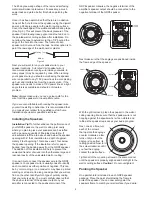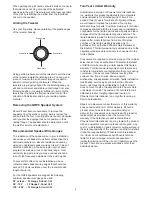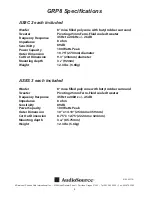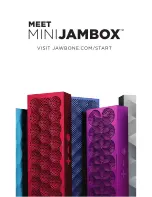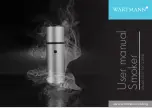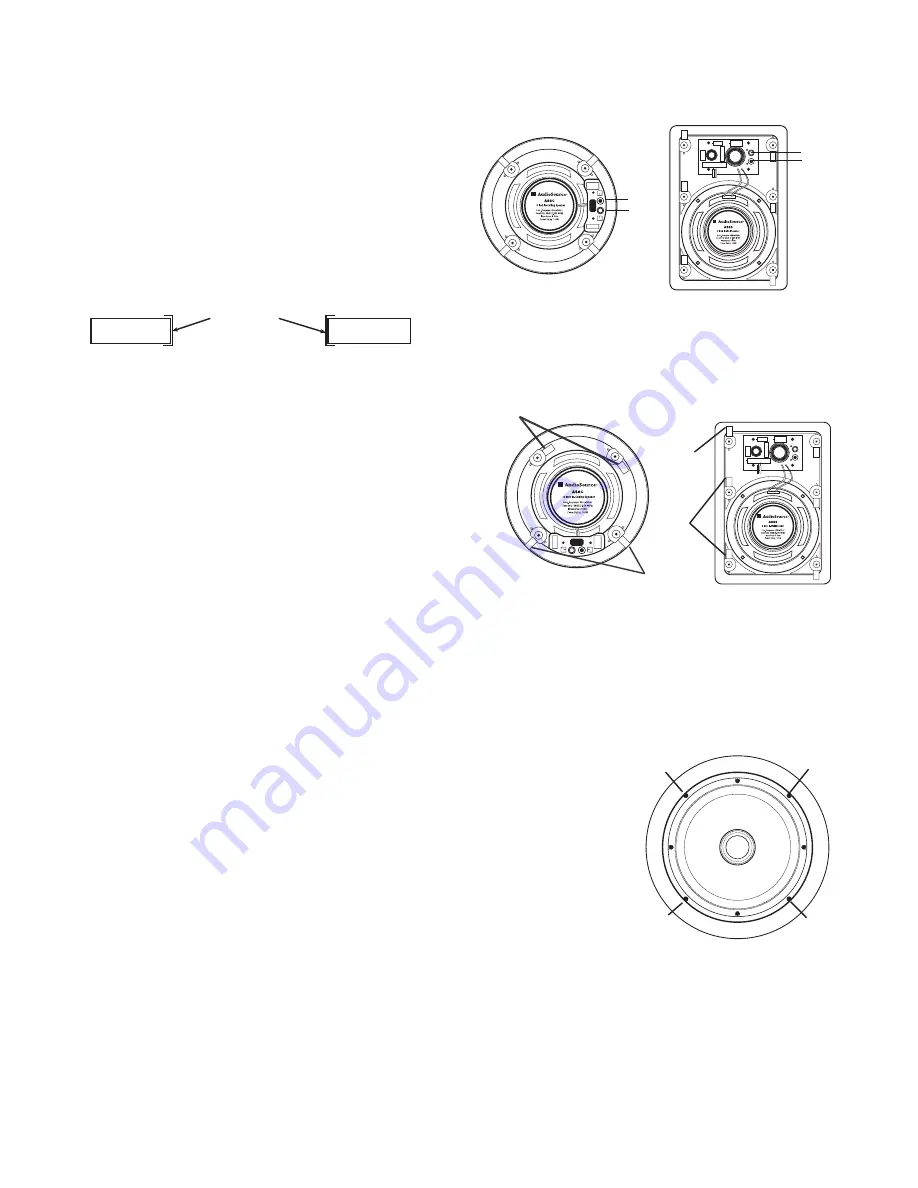
The 45 degree wedge shape of the removed surfacing
material will make replacement, if necessary, a much
easier task and yield a better finish when patching the
work.
Once it has been determined that there are no obstruc-
tions cut the hole to mount the speaker using the drywall
saw at a 90 degree angle to the wall or ceiling surface.
Cover the raw edges of the wallboard with masking tape
(See Fig. 3). This will prevent the back pressure of the
speaker from blowing loose gypsum dust out and on to
the painted wall or ceiling surface after installation. Do
not allow the tape to extend more than 1/4” beyond the
edge of the hole into the room. The frame of each
speaker will cover and hide the tape. Another option is to
paint the raw edge of the wall board or plaster.
Next you will want to run your speaker wire to your
speaker locations. A
UL rated CL3
speaker wire is
recommended when running wire inside your walls. In
many areas it may be required by code. When running
your speaker wire you should avoid having the speaker
wire run parallel to any 110V power lines to avoid picking
up hum and interference from the power service. If the
speaker wire needs to cross a 110V power line at a right
angle this is acceptable and should not create a
problem.
Note:
Always make sure you have a clear path for the
wire from the speakers to the amplifier source.
If you are uncomfortable with running the speaker wire
yourself in existing construction, it is recommended that
you consult your retailer for a qualified custom home
installation specialist or qualified electrician.
Installing the Speakers
Installation Tip!
To further enhance the performance of
your GRP8 speakers, the wall or ceiling joist cavity
where you plan to place your speakers can be stuffed
with a generous quantity of fiberglass insulation. If
uninsulated, stuff the area above and below the speaker
opening with 6” thick insulation to a depth of approxi-
mately 2 feet beginning 1 foot above and 1 foot below
the speaker opening. If the insulation is foil or paper
backed, face the backing away from the GRP8 speaker.
The addition of this insulation will help to prevent the
unwanted transfer of sound into the otherwise large and
resonant cavity of the uninsulated wall or ceiling.
It is now time to connect the speaker wire to the GRP8
speakers. Your speaker wire is usually coded to identify
each conductor as either positive or negative. This can
be by color coding, or one conductor may have a printed
marking or at least a rib along one edge that you will not
find on the other. Identify which type of polarity coding
that your wire is using. You must carefully observe that
the positive terminal of the speaker output on your
amplifier is connected to the positive terminal of the
Figure 3
ROOM
Masking T.ape
2
1
2
3
4
(+) Amp
(-) Amp
Correct
Incorrect
(+) Amp
(-) Amp
GRP8 speaker. Likewise, the negative terminal of the
amplifier’s speaker output should be connected to the
negative terminal of the GRP8 speaker.
Next make sure that the doglegs are positioned inside
the frame edge of the speaker.
With the grill removed, place the speaker in the wall or
ceiling opening. Make sure that the speaker wire is not
hanging against the speaker where it can vibrate and
rattle as the speaker reproduces your audio program.
Next, one at a time, turn
each of the screws
that operate the doglegs
counter clockwise a few
turns until you feel the
dogleg is loose from its
resting position. Now turn
the screw clockwise until
you feel the dogleg
contact the wall surface.
Tighten all of the mounting screws in the same manner
until the speaker is properly aligned and held tight to the
wall or ceiling surface.
Caution!
Do not overtighten!
Painting the Speaker
One paint shield is included in each GRP8 speaker
package. Place the paint shield inside the frame to
protect the speaker. You can now safely paint the
speakers frame to match your wall surface if you desire.
Correct
Incorrect


